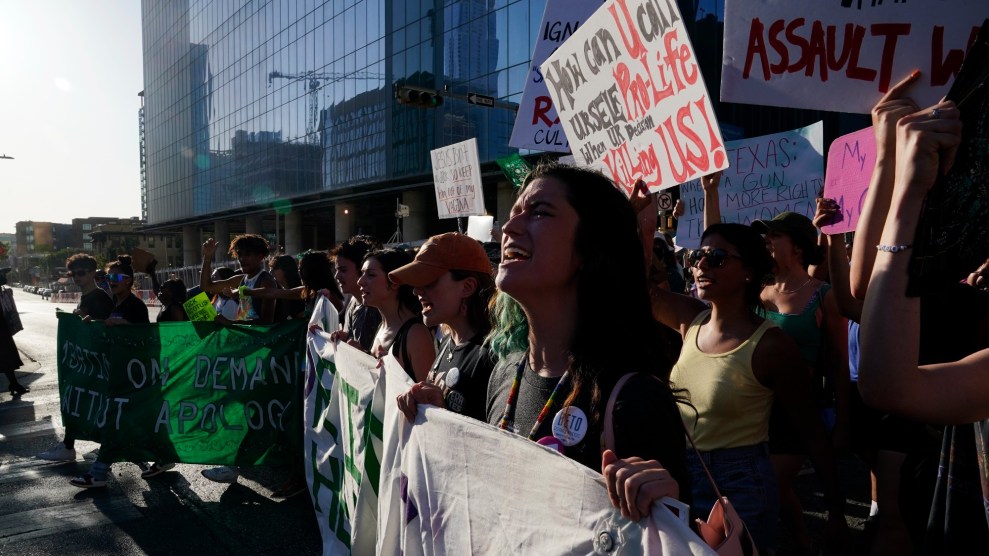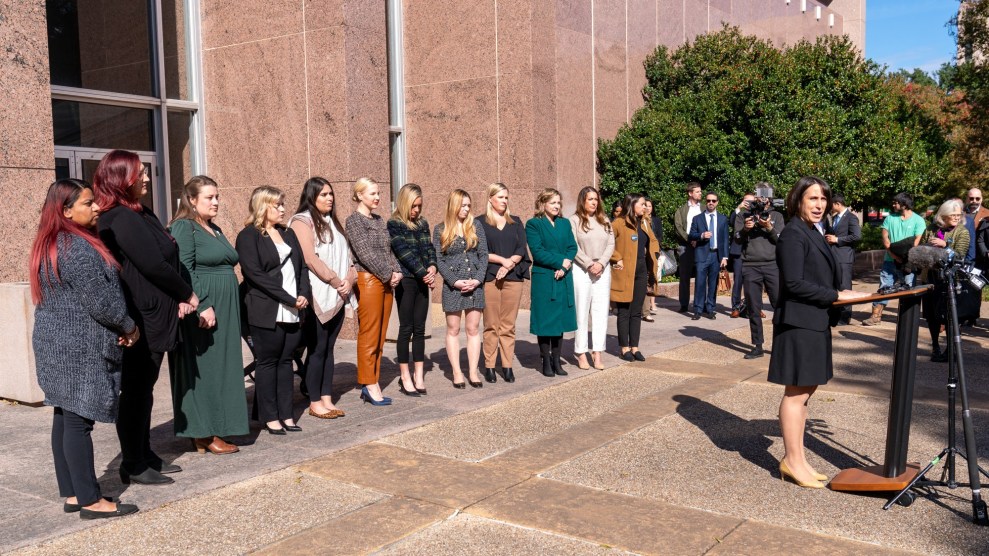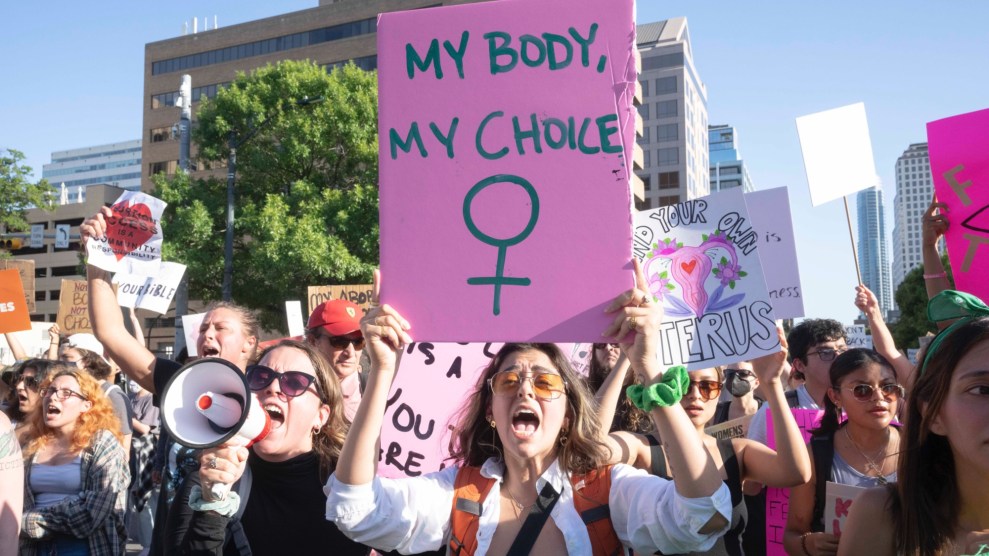
/Getty
For the first time since Roe was decided in 1973, a pregnant adult is asking a court to step in so she can have an abortion.
In late November, Kate Cox received the confirmation she’d been dreading: her fetus likely wasn’t going to survive. Cox, who lives in Texas, is 20 weeks pregnant. Doctors told her continuing the pregnancy could threaten her life.
Cox is now asking a judge to grant a temporary restraining order to halt the enforcement of Texas’ near total ban so she can terminate her pregnancy. “Kate Cox needs an abortion,” reads the first line of Cox’ petition, “and she needs it now.”
Cox is represented by the Center for Reproductive Rights. The organization is currently arguing in the Texas Supreme Court that pregnant people with medical complications have not been receiving proper care in the state. As I have previously reported, that case is about situations like the one Cox is experiencing right now in which vague exceptions to abortion bans undermine clarity of care:
[Texas’] law calls for “reasonable medical judgment” and permits abortion if the patient could die or if they’re at “serious risk of substantial impairment of a major bodily function.” The lawsuit argues this language is too vague and dangerous for pregnant people and providers.
The organization has brought similar suits in Tennessee, Idaho, and Oklahoma. But the Texas one marks the first time that directly impacted pregnant people have sued their state over a post-Roe law.
Cox’s petition argues that she doesn’t have time for the state’s Supreme Court to rule.
In the last month, according to the petition, Cox has been to three different emergency rooms after suffering from extreme cramping and other complications. After multiple appointments and tests, her medical team confirmed that her wanted pregnancy was causing imminent danger to her health. At an appointment on November 28, Cox found out that her fetus was diagnosed with full trisomy 18, a chromosomal disorder that causes fetuses to die before or soon after birth. “Their baby was likely to pass in utero,” the petition says, “be stillborn, or only live for a week at most.”
With each day that passes, Cox’s doctors explained, her life is more at risk. Cox and her husband, who is also listed on the petition along with her provider, have two other children who were both delivered through cesarean surgeries. Continuing the pregnancy until the fetus passes, or until birth, “puts her at high risk for severe complications threatening her life and future fertility, including uterine rupture and hysterectomy,” the petition notes. Her providers said their “hands are tied” due to Texas’ abortion ban.
Cox’s appointment happened on the same day that the Center was arguing for stronger protections for pregnant people. After she walked out of the hospital, Cox began considering her options. A Google search brought her to articles about the Texas Supreme Court case. She quickly contacted the Center and they took up her case.
“This is not a normal or reasonable or feasible way for health care to be practiced in this country,” Molly Duane, senior attorney for the Center for Reproductive Rights, said.
These two coinciding, first-of-their-kind, and intermingled cases show how the legal landscape for abortion in Texas is deeply complicated to navigate for providers and pregnant people.
“It is not a matter of if I will have to say goodbye, but when,” Cox said in her petition. “I do not want to continue the pain and suffering that has plagued this pregnancy. I do not want to put my body through the risks of continuing this pregnancy. I do not want to continue until my baby dies in my belly or I have to deliver a stillborn baby or one where life will be measured in hours or days, full of medical tubes and machinery.”

















